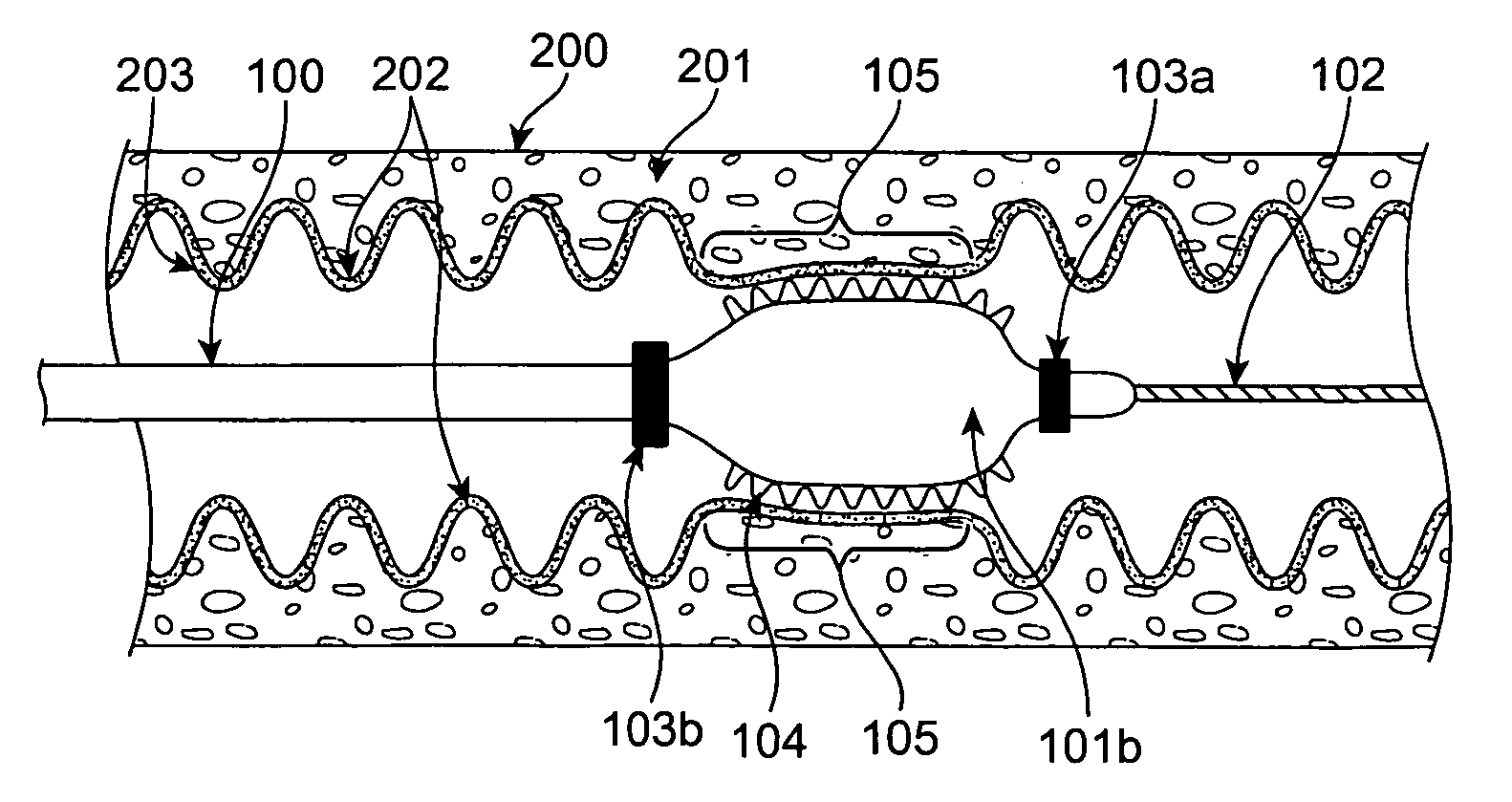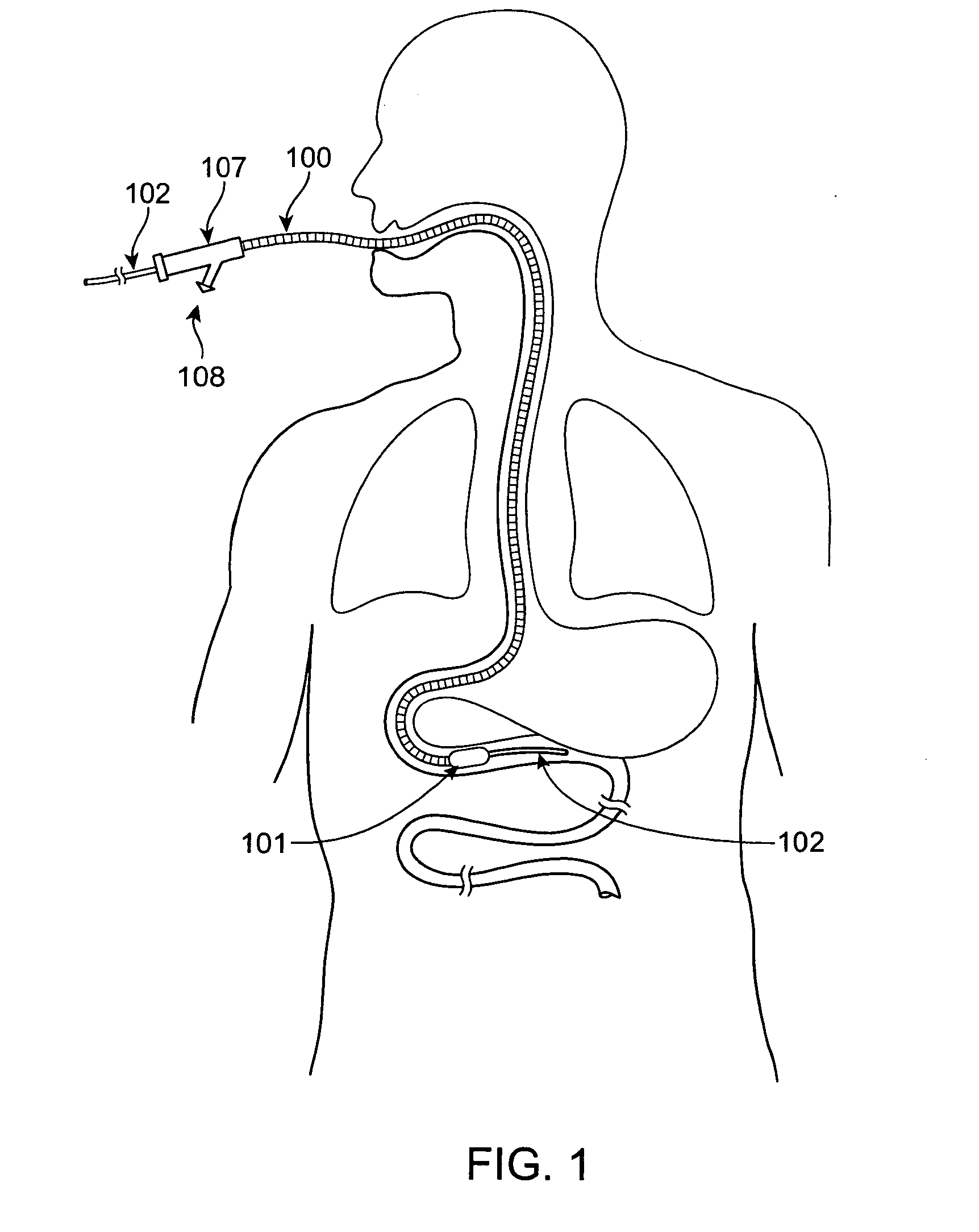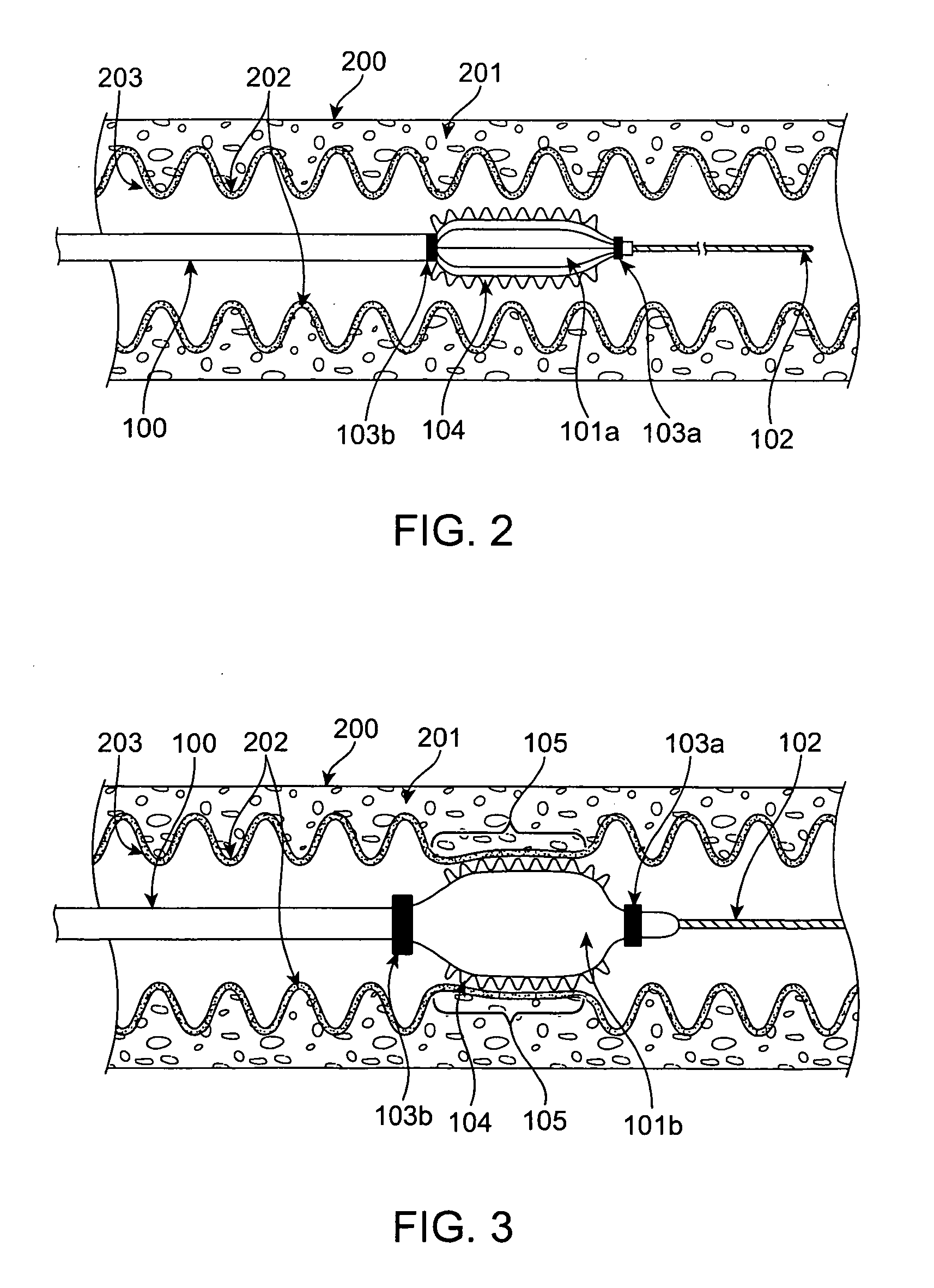Methods and devices for obesity treatment
a technology for obesity and treatment methods, applied in the field of medical/surgical methods and devices, can solve the problems of obliteration, compression, compression of villi and/or crypts, damage and/or removal, etc., and achieve the effect of reducing the surface area of intestinal mucosa and weight loss
- Summary
- Abstract
- Description
- Claims
- Application Information
AI Technical Summary
Benefits of technology
Problems solved by technology
Method used
Image
Examples
Embodiment Construction
[0033]Referring to FIG. 1, one embodiment of a balloon catheter 100 may be delivered through an oral cavity, esophagus and stomach, into the small intestine of a patient. In various embodiments, catheter 100 may be delivered alone, using a guidewire 102 (over the wire, rapid exchange, or the like) and / or through an endoscope (not shown). Catheter 100 may have a length sufficient to extend from outside a patient's mouth to a treatment location within the small intestine. In one embodiment, an expandable balloon 101 may be coupled with catheter 100 at or near its distal end. Balloon 101 may be inflated via any suitable connection to an inflation device, such as a port 108 on a Y-connector 107.
[0034]With reference now to FIG. 2, a more detailed view of a small intestine 200, intestinal wall 201 (or “mucosal wall”), mucosal villi 202 and crypts 203, as well as a more detailed view of a distal portion of catheter 100 and balloon 101, are shown. In one embodiment, to facilitate advancemen...
PUM
 Login to View More
Login to View More Abstract
Description
Claims
Application Information
 Login to View More
Login to View More - R&D
- Intellectual Property
- Life Sciences
- Materials
- Tech Scout
- Unparalleled Data Quality
- Higher Quality Content
- 60% Fewer Hallucinations
Browse by: Latest US Patents, China's latest patents, Technical Efficacy Thesaurus, Application Domain, Technology Topic, Popular Technical Reports.
© 2025 PatSnap. All rights reserved.Legal|Privacy policy|Modern Slavery Act Transparency Statement|Sitemap|About US| Contact US: help@patsnap.com



